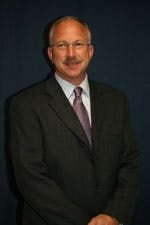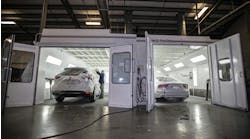For my last Profit Motive article I’d like to provide a review of some important numbers of profitability. Since we just finished the first quarter of 2013 it will give you an opportunity to see how your shop matches up, make any needed changes and move forward to a profitable 2013.
The first and most important number to look at is total gross profit. Ideally it should be about 45 percent but I have seen shops where it hovered in the thirties. There are several numbers that play into total gross profit. The one that plays a big part in reaching the 45 percent goal is labor gross profit because it is the highest area of profitability at 60 to 65 percent.
Like this article? Sign up for our enews blasts by clicking here.
Attaining 60 t0 65 percent labor gross profit can be difficult if you have multiple labor rates. I was talking to a shop manager the other day who could not understand how he was losing so much in labor gross profit. We talked about his door rate, what his insurance companies were paying and the rate he was charging a fleet customer. After a short discussion I identified the problem was in how he was calculating his technician rate. He was doing the math properly but he was paying his technicians an average of 40 percent of his door rate, not an average of the rate he was actually being paid.
When we discussed his rates I found there was a $10 swing between his door rate and the lowest rate he was collecting. A technician rate of 40 percent of the door rate ended up being 52 percent of the rate he was charging his fleet customer. There are several ways to correct this, either develop an average labor rate for your shop and calculate your technician pay based on that or have some lower waged technicians to handle the work that pays the lower rate.
A second number that plays a valuable part in attaining your total gross profit goal is paint and material gross profit. A shop with high total gross profit is generally recording its paint and material gross profit in the area of 35 to 40 percent. The biggest obstacle to reaching the goal in paint and material gross profit is waste.
When visiting shops I like to look and see how much paint is left over and sitting on the bench. I think an average of one half ounce is acceptable and believe anything over an ounce is a problem. I recommend that painters use the panel calculators available in most computerized mixing systems as a base level and then reduce the amount they mix in one-half ounce increments until they eliminate over mixing. Using this process helps them build confidence that they will not run out of paint in the booth as well as reducing the amount of waste on the bench. As the painters refine their process you should be able to keep your costs below $19.50 per refinish flag hour.
The last area we will look at is parts gross profit. Reaching a parts gross profit goal of 28 to 32 percent would put you in a good position in your efforts to attain 45 percent total gross profit. Negotiating with parts vendors and acquiring discounts based on purchase volume is one of the best ways to reach the parts gross profit goal. Another area to look at is LKQ parts purchases. It is standard to mark-up LKQ parts 25 percent of the purchase price, however this only allows 20 percent gross profit. I encourage shops to ask for 25 percent gross profit from their insurance partners rather than mark-up. To appreciate a true 25 percent gross profit you have to mark up the LKQ part 33 percent which will get you closer to the 28 to 32 percent parts gross profit goal.
Keeping these three areas on track will help you keep your business profitable. As you review your numbers you will also see how quickly your total gross profit number will drop if one of these areas falls out of line. Use your management system to track your numbers per repair order and as a cumulative number as your month progresses. Waiting until month end is too late to make changes that will allow you to recover and post numbers of profitability.
I enjoyed writing Profit Motive articles the last couple of years while working as a consultant. I recently accepted a position as director of Bowditch Collision Centers, an MSO in Southeastern Virginia. The demands of that position won’t allow me to dedicate the time needed to write for ABRN. I hope you were able to take something away from each of my articles and apply them in your business. Thanks for reading and good luck.
Subscribe to ABRN and receive articles like this every month….absolutely free. Click here.




